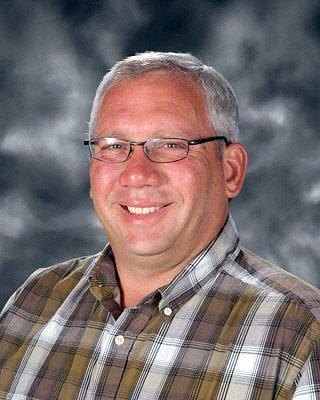On Aug. 31, 2007, Washington’s 296 school districts became 295. Vader School District ceased to exist at the stroke of midnight that day.
A series of failed levy and bond elections caused the school district to become financially non-viable and the State of Washington, through its Office of Superintendent of Public Instruction, took control of the district and conducted the legal process to dissolve the district and close the school.
Vader is a small town in southwest Washington’s Lewis County. At one time a forest products community, it had slowly transitioned into a retirement center.
In 2006, the district had proposed a succession of levies to fund operations that failed to gain the required approval from voters.
Then routine health inspections uncovered life and safety deficiencies first in the school’s gymnasium and then throughout the school’s instructional building. Lewis County condemned the gym and ordered the school district to make the needed repairs or its instructional building also would be condemned.
The district asked voters to approve a bond issue to address the school’s structural, fire alarm and detection, electrical, phone and intercom systems, and heat systems. The bond issue failed as well, Lewis County condemned the school building and the State of Washington began the consolidation process.
A key point: Historical accounts of Vader’s dissolution indicate that voters were informed repeatedly that if building issues were not addressed, the district could face dissolution and consolidation into a neighboring district with a higher tax rate than what was being presented to voters in all three elections.
Voters expressed distrust in these statements made by district and state government officials.
Fallout in Vader
So what was the ultimate fallout from consolidation? Exactly what the school and state said was going to happen: the district dissolved, Castle Rock School District took over, and Vader’s students were bused out of town to the nearest elementary school 15 miles away.
The taxpayers were subjected to Castle Rock’s higher tax rate even though they did not have a chance to vote on the levy and bond issues that comprised those taxes.
That tax rate ended up being higher than the district had proposed to voters in the failed elections. The community lost control of and influence on its students’ futures.
Our schools
In Sequim, Haller Elementary is facing many of the same issues that Vader’s school building faced: There are only two toilets for every 120 students in the instructional buildings (not bathrooms, but toilets).
Haller’s electrical system cannot supply adequate electricity to operate in today’s high tech environment, its fire detection and alarm systems do not extend to all areas of the school and the system is so antiquated that parts to extend it are not available.
The electronic brain of the system does not have the capacity to accept any further connections of fire detectors or alarms.
Security issues created by a dispersed building configuration like Haller’s make the site very difficult to secure.
Other sites across Sequim School District face similar pressures. Our instructional and support staff do their very best to overcome these issues as they work with your students but they need our community’s help.
Could school consolidation happen here? Could our community’s students be bused to other towns? Could Sequim-Dungeness Valley residents be subjected to the higher property taxes of neighboring school districts and lose the representation of an elected school board? Yes, this could happen here.
The Sequim School District has a long-range facility plan created by a committee of citizens in collaboration with district officials and planning professionals to address these problems. The district’s plan corrects current building deficiencies and provides school facilities that help our students instead of limiting their learning opportunities like they do now, all at a tax rate less than half of what other districts our size pay.
Keep in mind the lessons of the Vader School District when thinking about our community’s schools. Contact us at the school if you have any questions at all about the facilities plan or the bond issue. Don’t rely on rumors to inform your voting decision; go right to the source.
You can call me at 582-3266, e-mail blewis@sequim.k12.wa.us or check our website, www.sequim.k12.wa.us, for more information about the bond.
These are your buildings and, more importantly, your community’s students.
Brian Lewis is Director of Business Operations for the Sequim School District.



